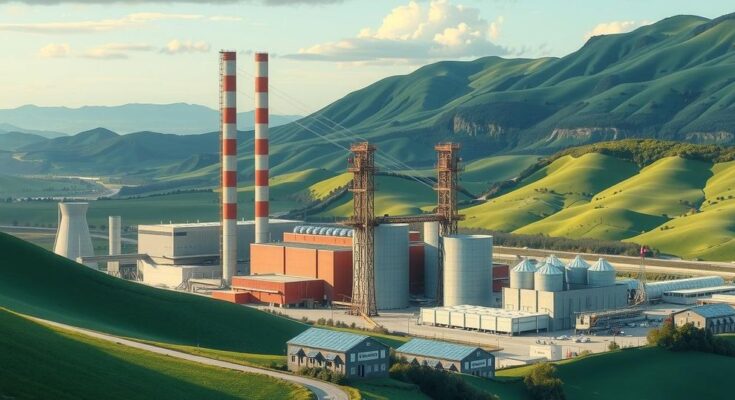The new $546 million steel plant in Puerto Suarez, Bolivia, funded by China, is set to meet half of the country’s steel demand, create 1,000 local jobs, and enhance economic recovery. The plant is expected to produce 200,000 metric tons of steel annually and boost exports, particularly to Brazil. Bolivia aims to increase collaboration with China, particularly in the expansive areas of lithium and food products, as part of its growing trade relationship.
A new steel plant in Puerto Suarez, Bolivia, financed primarily by the Export-Import Bank of China, aims to satisfy half of the nation’s steel demand while contributing to its economic recovery. The Mutun plant, valued at $546 million and inaugurated on February 24, is managed by Sinosteel Engineering and Technology, a branch of the state-backed Sinosteel Corporation.
This venture is projected to generate approximately 1,000 jobs, providing much-needed employment amid economic challenges such as low foreign reserves and rising inflation. According to Omar Portillo, an economics professor at the Higher University of San Andres, the plant will significantly diminish Bolivia’s reliance on steel imports and enhance its export capabilities.
The plant is expected to produce 200,000 metric tons of steel annually, focusing predominantly on rebar and wire mesh, with an estimated value of $260 million. It will utilize 66,000 tons of raw material each month from the Cerro Mutun deposit, one of the largest iron ore reserves globally. The project had faced numerous delays due to previous contract issues but was revived through Chinese investment.
Furthermore, the Bolivian government is planning to develop a second steel plant, potentially in partnership with China, as the first plant is anticipated to vastly increase iron and steel exports, which reached $23.51 million in 2023. The relationship between Bolivia and China, the latter being a primary trading partner in mining and industrial sectors, is growing stronger.
In 2023, Bolivia exported $1.21 billion worth of goods to China, predominantly precious metals and ores. Juan Jose Bedregal, an economist at the Higher University of San Andres, stated that Bolivia is poised for further integration with Chinese markets, especially in food products and the lithium industry. The collaboration aligns with both nations’ ambitions for a multipolar world as part of the BRICS initiative, which Bolivia joined as an associate member this year.
China’s investments extend beyond steel, as Chinese companies have also been involved in Bolivia’s construction sector over the past decade, securing contracts for infrastructure development. The steel plant and the upcoming Chancay Port in Peru are expected to bolster Bolivia’s economic landscape, though Portillo emphasizes the need for diversification in fuel supply sources and improving logistical efficiency in trade.
Portillo proposes the establishment of an “integration route” to connect with Chancay Port, enhancing export logistics and capitalizing on positive relations with China. He asserts that this approach will significantly facilitate Bolivia’s trade endeavors in the future.
In conclusion, the inauguration of the China-funded steel plant in Bolivia marks a pivotal step towards the nation’s economic recovery and industrial advancement. Through significant job creation and a reduction in reliance on steel imports, this project, along with potential future collaborations with China, positions Bolivia favorably in the global market. The strengthening of trade relations with China, notably in sectors such as mining and food, further supports Bolivia’s economic strategy within the context of a multipolar world.
Original Source: www.chinadaily.com.cn




